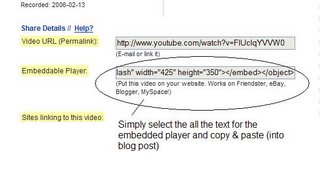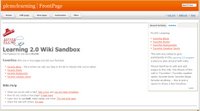So now that you’ve been blogging for awhile, you might be wondering just how big the blogosphere is. Well, according to Technorati, the leading search tool and authority for blogs, the number of blogs doubles just about every 6 months with over 900,000 blog posts posted every 24 hours. Already, Technorati indexes more than 133 million blog entries. Yes, these numbers are astounding, but as you’ve seen, blogging is so easy that these publishing tools are being taken advantage of by almost every industry, including libraries.
So how does a person get their blog listed as part of the blogosphere and how can you tag your posts with keywords to make them accessible through a Technorati search? The answer to the first question is that your blog is probably already being captured by Technorati due to the fact that you are using
Blogger, the most popular blogging tool. But if you want to join the party and have your blog officially listed on Technorati and also take advantage of the watchlist and other features, you’ll need to
claim your blog yourself. As for tagging posts with Technorati tags? This is easy, too. All you need to do is add a tag to the bottom of your post (on Blogger there's a spot called "Labels for this post") and Technorati will pick up these tags when it spiders (or
web crawls) your site.
There are a lot of new features that have been added to Technorati, including new ways to search for blogs. You can search for keywords in blog posts, search for entire blog posts that have been tagged with a certain keyword, or search for blogs that have been registered and tagged as whole blogs about a certain subject (like photography or libraries).
Discovery Resources:Some Technorati
How-TosTechnorati
Discover &
Popular features
Discovery Exercise:
Take a look at Technorati and try doing a keyword search for “Learning 2.0” in
Blog posts, in tags and in the
Blog Directory. Are the results different?
- Explore popular blog, searches and tags. Is anything interesting or surprising in your results?
- Create a blog post about your discoveries on this site, and tag your posts by with Technorati tags so they can join tag searches. Create a post about something. It can be anything you want and add the HTML code to the bottom to tag it as “SAPLL2.” You may also want to consider claiming your blog and creating a watchlist.
There's a lot to explore. Have fun!
 Wow! Congratulations!! You’ve reached the 23rd thing. Be sure to give yourself a pat on the back for completing the program. Your reward for completing this journey by our deadline (December 31, 2008, 11:59pm) is ONE OF MANY FABULOUS PRIZES. But before sending this off you, I ask for one last discovery post.
Wow! Congratulations!! You’ve reached the 23rd thing. Be sure to give yourself a pat on the back for completing the program. Your reward for completing this journey by our deadline (December 31, 2008, 11:59pm) is ONE OF MANY FABULOUS PRIZES. But before sending this off you, I ask for one last discovery post.











 Photo sharing websites have been around since the '90s, but it took a small startup site called
Photo sharing websites have been around since the '90s, but it took a small startup site called 



